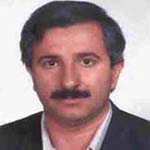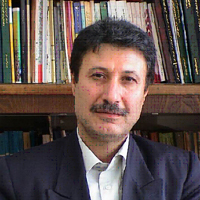Explaining the patterns of collective behavior and its impact on the growth and prosperity of children in public spaces of the metropolis of Mashhad
Man is always in interaction with the environment of which he is a part, and usually social behavior needs a bedrock to occur, so the relationship between man and the environment is a reciprocal and interactive relationship. Human behaviors are the result of a person's motivations and needs, the ability of the environment, the mental image resulting from his perception of the outside world and the meaning that this image has for him; Therefore, each behavior under the influence of the above conditions can take different forms and create a variety of behaviors. Behavior is not just a function of activity; It is a combination of activity, time and environment. Humans always spend a significant part of their daily time in public spaces of the city and under the influence of these spaces, they show certain behavioral patterns. Among these, urban parks are one of the most important public spaces in cities that should be To be considered by planners and city managers. On the other hand, the subject of sciences such as urban planning and design is "creating quality public spaces" in the city. Therefore, one of the main purposes of this article is to explain the patterns of collective behavior and its effect on the growth and self-actualization of children in the use of various urban parks in the metropolis of Mashhad. This research is of applied type and its method is descriptive-analytical. Also, non-parametric statistical methods such as chi-square statistics have been used to measure and analyze 384 questionnaires designed using SPSS software. The results of this study show that the behavioral patterns of citizens in the studied parks in the four areas (one, nine, eleven and Samen) of Mashhad are influenced by the design quality and the desirability of the interior spaces of the parks, which is important for the growth index. And the flourishing of children has a great impact so that the higher the quality of public spaces, including urban parks where social interactions are, the more purposeful collective behaviors are formed in such spaces, and this issue affects the rate of learning, growth and flourishing of children. Coming to the park with their parents has a great impact.Man is always in interaction with the environment of which he is a part, and usually social behavior needs a bedrock to occur, so the relationship between man and the environment is a reciprocal and interactive relationship. Human behaviors are the result of a person's motivations and needs, the ability of the environment, the mental image resulting from his perception of the outside world and the meaning that this image has for him; Therefore, each behavior under the influence of the above conditions can take different forms and create a variety of behaviors. Behavior is not just a function of activity; It is a combination of activity, time and environment. Humans always spend a significant part of their daily time in public spaces of the city and under the influence of these spaces, they show certain behavioral patterns. Among these, urban parks are one of the most important public spaces in cities that should be To be considered by planners and city managers. On the other hand, the subject of sciences such as urban planning and design is "creating quality public spaces" in the city. Therefore, one of the main purposes of this article is to explain the patterns of collective behavior and its effect on the growth and self-actualization of children in the use of various urban parks in the metropolis of Mashhad. This research is of applied type and its method is descriptive-analytical. Also, non-parametric statistical methods such as chi-square statistics have been used to measure and analyze 384 questionnaires designed using SPSS software. The results of this study show that the behavioral patterns of citizens in the studied parks in the four areas (one, nine, eleven and Samen) of Mashhad are influenced by the design quality and the desirability of the interior spaces of the parks, which is important for the growth index. And the flourishing of children has a great impact so that the higher the quality of public spaces, including urban parks where social interactions are, the more purposeful collective behaviors are formed in such spaces, and this issue affects the rate of learning, growth and flourishing of children. Coming to the park with their parents has a great impact.of children has a great impact so that the higher the quality of public spaces, including urban parks where social interactions are, the more purposeful collective behaviors are formed in such spaces, and this issue affects the rate of learning, growth and flourishing of children. Coming to the park with their parents has a great impact.
-
Investigating the Effects of Climate Change on the Livability of Cities: A Case Study of Mashhad City
Hossein Hataminezhad, Ali Hosseini *, Abolfazl Mansouri Etminan, Maryam Bayrami
Journal of Urban Structure and Function Studies, Autumn 2025 -
Assessment of the ecological potential for sustainable territorial development (Case study: Jajroud watershed)
*, Fateme Mohebi, Amirhossein Kazem
Arid regions Geographic Studies, Spring 2025 -
Formulating Eco-City Strategies with Emphasis on Environmental and Social Potentials: A Case Study of Gerash City
Salman Mehrabi, Navid Saeidi Rezvani*, Keramatollah Zyari
Journal of Future Cities vision, Winter 2025 -
Spatial Prospect of Resilience Against Flood Risk (Neighborhoods of Region One of Tehran)
Saeed Zanganeh Shahraki*, , Ali Hosseini, Mohammadsina Shahsavari
Journal of Future Cities vision, Autumn 2024 -
Social Behaviors Pathology in Informal Settlements of the Cities of Khorasan Razavi Province, A Case Study of Mashhad, Neyshabur, Torbat-e Jam, Sabzevar and Sarakhs Cities
Hojjat Hataminejad, *
Creative City Design, Jan 2022 -
Foresighting of citizen urban care models in various public spaces of Mashhad metropolis
Hojat Hatami Nejad*, Hoda Alikhani
Journal of Future Cities vision,



